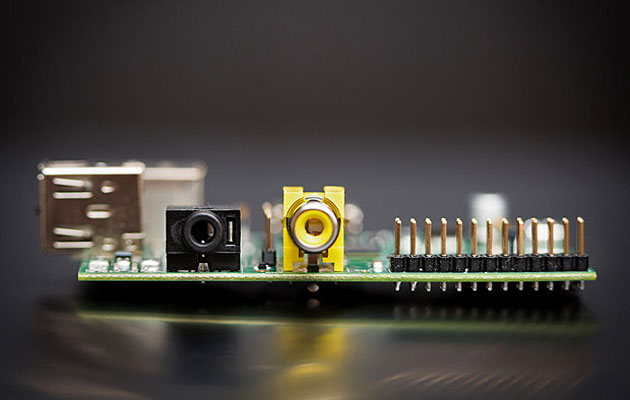|
|
||
|
The Raspberry Pi is a programmable personal computer the size of a credit card. All you need to make it work is a memory card and a keyboard and monitor to connect it to. It can then be used just like a desktop PC – for spreadsheets, word-processing and games – and it also plays high-definition video. Since it launched in February 2012, it has sold 500,000 units all over the world, but the inventors of the Raspberry Pi were trying to address a very specific problem. “It’s really parochial, when you think about it,” says Eben Upton, the founder and one of the trustees of the non-profit Raspberry Pi Foundation. Upton and his colleagues at the Computer Science Laboratory at Cambridge University were noticing that “fewer people were applying to read computer science and every year the things they could do were less impressive”. It struck Upton that children of his generation who grew up in the 1980s had had general, programmable computers: the Spectrum, BBC Micro or Commodore 64. But despite the huge rise in the presence of personal computers and games consoles in the home, more recent generations have not been able to tinker with computers in the same way. From the point of view of the computer laboratory, this was a problem, given the university’s short eight-week terms. As Upton explains, “You’ve got about 60 weeks of contact time to turn someone from a sixth former into somebody who can go into industry or start a PhD programme.” His view is that the minimum age for users of the Raspberry Pi should be ten – “because that’s when I started programming”. But some of the other trustees think they could start even younger, on the same principle that the earlier you expose children to a foreign language or to a musical instrument, the greater the benefits. Despite the didactic aims of its creators, Upton stresses that they wanted to come up with something engaging – after all, even if 1980s Spectrum users did end up using their computers to program, they usually bought them to play games on. “We wanted to have something that was reasonably powerful, that wasn’t just a programming tool, that could do other interesting stuff.” Making something very robust was also crucial, “so that children could push it into a schoolbag and pull it out again 100 times without breaking”. And, finally, the components included were determined by cost: “We wanted something that was the same price as a school book, because we know you can ask a child to buy a school book … ” Once they had set a price of between £20 and £30, Upton says, “that really narrows your choices down, very substantially, to a point where you can’t build anything other than a Raspberry Pi”. The computer came with 256MB of RAM in February and now ships with double that, for the same price as before. Upton says that one of the biggest surprises to him, given that he comes from a software background, is that people have been using the Raspberry Pi for hardware projects, such as controlling robots, and activating sensors in the home. And these users include both adults and children. The Raspberry Pi Foundation has plans for creating teaching materials, but at the moment, Upton says, “The people who are best at delivering Raspberry Pi as a teaching platform are engineers; what we’re often seeing is parents who are engineers using this as a way to talk to their children about what it is they do in their jobs, and that is something we never saw coming.”
|
Image sotechdesign.com.au
Words Fatema Ahmed |
|
|
||



















